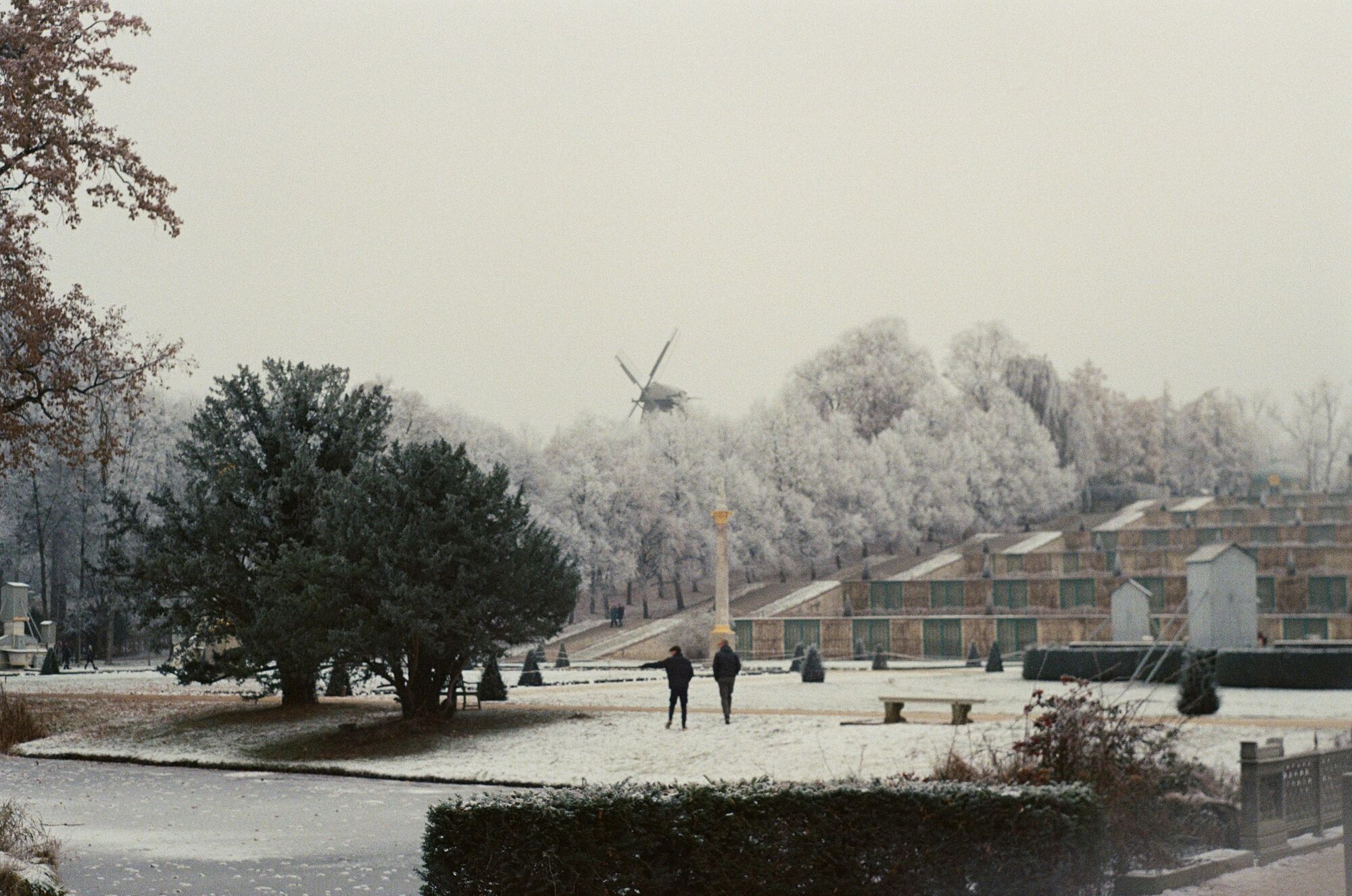Sanssouci Palace: Germany’s Answer to Versailles and a Journey into Royal Splendor

Tucked away in the picturesque city of Potsdam, just outside Berlin, lies Sanssouci Palace, a regal retreat often hailed as Germany’s alternative to France’s iconic Versailles. Built as the summer residence of Frederick the Great, Sanssouci translates to "without worries," perfectly encapsulating the leisurely and carefree ambiance the Prussian king sought to create within its walls. Today, Sanssouci stands as one of Germany’s most remarkable landmarks, attracting visitors from around the globe eager to experience its breathtaking architecture, lush gardens, and deep historical significance.
For travelers seeking a European palace experience that rivals the opulence of Versailles but offers a more intimate, tranquil atmosphere, Sanssouci is an ideal choice. Combining royal grandeur with natural beauty, this UNESCO World Heritage Site tells the story of Prussian royalty and offers a glimpse into the life of one of the 18th century’s most influential monarchs.
A Palace of Personal Design: Frederick the Great’s Vision
Sanssouci Palace is not just another grand royal residence; it was meticulously designed to reflect the personal tastes and philosophies of Frederick the Great. Unlike Versailles, which was built to demonstrate the absolute power of the French monarchy, Sanssouci was conceived as a private retreat. Frederick desired a sanctuary where he could escape the formalities of court life, indulge in intellectual pursuits, and enjoy the company of close friends and philosophers.
Designed in the Rococo style, known for its lightness, elegance, and playful use of curves, Sanssouci is smaller and more intimate than the sprawling Versailles. The palace’s single-story structure blends harmoniously with the surrounding landscape, creating a seamless transition between architecture and nature. The famous terraced vineyard, which leads up to the palace, not only served an aesthetic purpose but also reflected Frederick’s love for agriculture and his desire to be seen as a philosopher-king in tune with the natural world.
Inside, the rooms are richly decorated with intricate stuccowork, gilded ornaments, and fine artworks, yet the scale remains human, making the palace feel less overwhelming than its French counterpart. The Marble Hall, with its grand domed ceiling and classical columns, serves as the focal point of the palace’s interior, reflecting Frederick’s passion for the arts and his admiration for ancient Greece and Rome.
The Gardens of Sanssouci: A Green Wonderland
One of the most enchanting aspects of Sanssouci is its extensive and beautifully landscaped gardens, which rival the grandeur of Versailles’ famed grounds. Covering over 700 acres, the Sanssouci Park is a masterpiece of Baroque garden design, carefully laid out to provide both visual splendor and quiet contemplation.
The gardens feature a mix of formal and natural elements, with manicured lawns, ornamental flowerbeds, and tree-lined avenues. At the heart of the park lies the grand Neptune Fountain, a stunning display of mythological figures and flowing water that adds a sense of drama to the serene landscape. Visitors can also wander through the Chinese House, a whimsical Rococo pavilion that reflects Europe’s fascination with Asian art and culture during the 18th century.
One of the park’s most iconic features is the Orangery Palace, built in the Italian Renaissance style, which served as a winter home for exotic plants and a guesthouse for royal visitors. The expansive vistas and carefully crafted pathways invite visitors to explore the park’s hidden gems, including the Roman Baths, another architectural nod to Frederick’s love of classical antiquity. Whether you’re an avid gardener or simply enjoy leisurely walks, the park’s combination of formal beauty and natural tranquility offers a rejuvenating escape from the modern world.
A Meeting Place for Minds: Sanssouci’s Intellectual Legacy
Sanssouci Palace was not merely a royal residence; it was also a hub for intellectual discourse and cultural exchange. Frederick the Great, known for his enlightened views, was a patron of the arts and a dedicated philosopher. He surrounded himself with some of the greatest minds of his time, including the French philosopher Voltaire, who stayed at Sanssouci for several years.

The palace’s salons became the setting for lively debates on topics ranging from politics and philosophy to art and literature. Frederick’s correspondence with Voltaire, as well as his own philosophical writings, cemented his legacy as a ruler deeply engaged with the ideas of the Enlightenment. Visitors to Sanssouci can still see the room where Voltaire stayed, adorned with colorful floral motifs and reflecting the intellectual vibrancy that defined Frederick’s court.
The New Palace: A Grand Addition
While Sanssouci remains the jewel of Potsdam, it is not the only royal structure within the city’s borders. In 1763, following the end of the Seven Years’ War, Frederick commissioned the construction of the New Palace to celebrate Prussia’s military victories and to demonstrate the kingdom’s strength and resilience. Unlike the intimate design of Sanssouci, the New Palace is grand and imposing, reflecting Frederick’s desire to leave a lasting legacy.
The New Palace, located at the opposite end of Sanssouci Park, features over 200 rooms, lavish ballrooms, and the ornate Grotto Hall, adorned with shells, marble, and semi-precious stones. It was used to host grand state functions and house important guests, including foreign dignitaries and members of the royal family. Today, the New Palace stands as a testament to Prussia’s power during the reign of Frederick the Great and offers visitors a glimpse into the more formal side of 18th-century royal life.
Sanssouci vs. Versailles: A Royal Rivalry?
While comparisons between Sanssouci and Versailles are inevitable, the two palaces offer distinctly different experiences. Versailles, with its vast halls, intricate gardens, and emphasis on absolute power, represents the height of Baroque excess and the grand ambitions of the French monarchy. In contrast, Sanssouci, though equally opulent, is more personal and introspective, reflecting Frederick the Great’s philosophy of enlightened rule and his desire for simplicity amid luxury.
For travelers, this distinction makes Sanssouci an appealing alternative to Versailles, particularly for those who prefer a quieter, more reflective experience. The palace’s smaller scale allows visitors to engage more intimately with its history and artistry, while the sprawling park offers ample space for peaceful exploration. Sanssouci’s connection to both Prussian history and the broader intellectual movements of the Enlightenment adds depth to its beauty, making it a destination that captivates both the mind and the senses.
Planning Your Visit: Practical Information
Sanssouci Palace and its surrounding park are easily accessible from Berlin, making it an ideal day trip for those visiting the German capital. Trains from Berlin to Potsdam run frequently, and the palace is just a short walk or bus ride from Potsdam’s main train station.
The best time to visit Sanssouci is during the spring and summer months, when the gardens are in full bloom, and the weather is ideal for strolling through the park. However, autumn’s golden hues also offer a magical backdrop to the palace’s vibrant architecture.
Tickets for Sanssouci can be purchased in advance, and guided tours are available to help visitors delve deeper into the history and significance of the palace. It’s worth setting aside several hours to explore both the palace and the park, allowing time to take in the beauty of the landscape and discover the many architectural treasures scattered throughout.



















